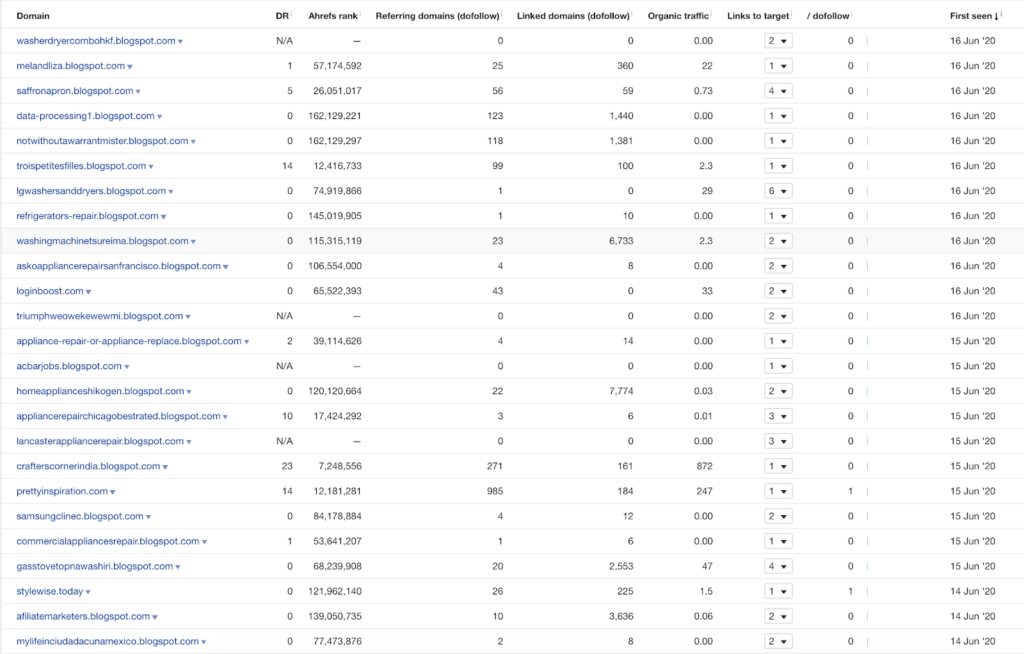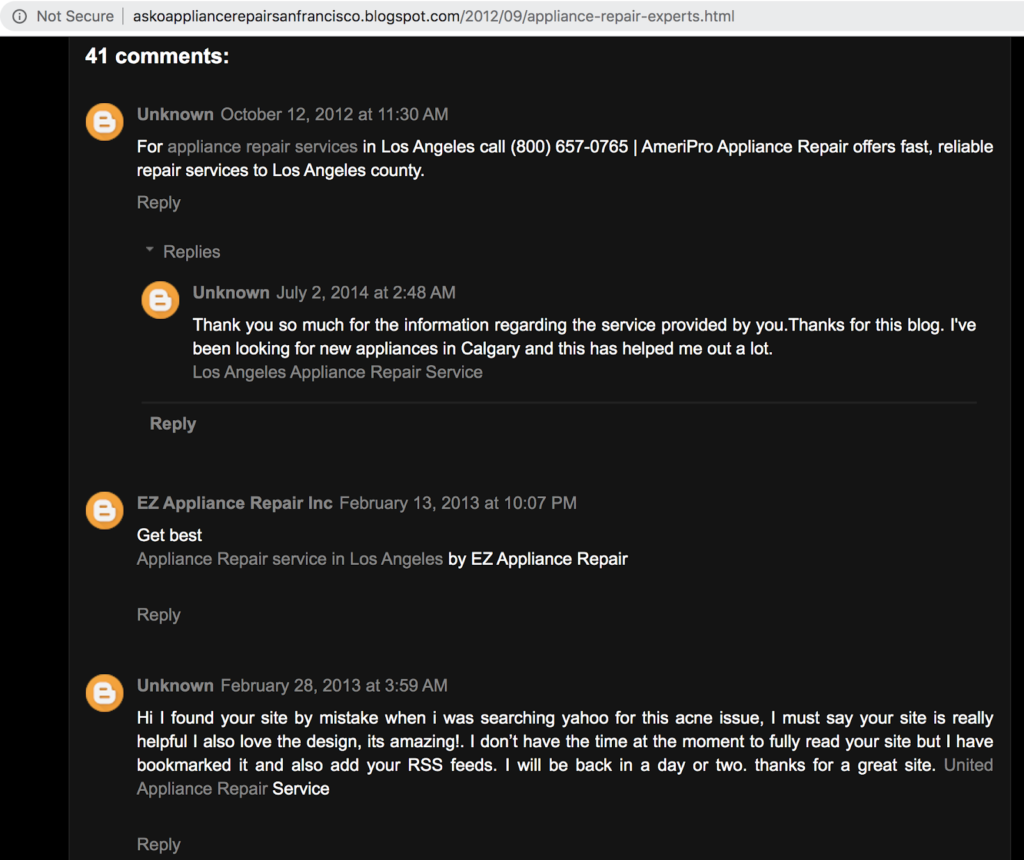The anatomy of a negative SEO attack
LinkGraph CTO, Manick Bhan, discusses the most common types of negative SEO and details how site owners can perform negative SEO remediation.
LinkGraph CTO, Manick Bhan, discusses the most common types of negative SEO and details how site owners can perform negative SEO remediation.
In the early days of search engine optimization, a variety of black-hat techniques allowed SEOs to dominate the first page of search. Cloaking, keyword stuffing, backlink spam, and other strategies could catapult websites to the first page. But those days are long gone. Google’s algorithms are extremely powerful and can easily result in a negative SEO attack. Not only will black-hat strategies no longer work – they will destroy your site’s rankings and even prevent your domain from ranking permanently.
So for those out there on the internet who are not interested in seeing your domain move up the first page, black hat SEO is an easy way to harm your website. Many new site owners are so eager to get any backlinks that they can, they allow low-quality links to populate their profile without ever thinking about where those links are coming from, or why those other site owners linked to them in the first place.
Negative SEO attacks are real. I’ve helped many clients recover from them. They can come from competitors, hackers, or seemingly out of nowhere, but without a quick response, a website’s reputation with search engines can be permanently harmed.
Although Google algorithm updates or technical issues with your website can impact your keyword rankings, an unexpected drop could be a sign of negative SEO. The good news is, the anatomy of a negative SEO attack is clearly recognizable. If you take quick action, you can protect your website and minimize the damage.
The reality is, every time your site moves up a spot in the SERPs, you knock another site down. It’s not fun to imagine that other people would use negative SEO to harm your efforts, but if you offer great service or product that could take business or traffic away from someone else, then your site is at risk.
Any website can experience a negative SEO attack, but local businesses and startups with less than 300 referring domains are the most vulnerable. The smaller your backlink profile, the more impactful any low-quality or unnatural links will be. If 50% of your links are spammy and you’re a brand new site, Google crawlers are going to look at your backlink profile and assume your site is trying to cheat your way to the top.
For new webmasters, in particular, it’s critical to pay close attention to every backlink you acquire. This is also true when you pay for the services of a link building company. Some site owners are hesitant to pursue link building because they have had negative experiences with SEOs in the past who engaged in these spammy techniques that ended up tearing their site down rather than building it up.
As your backlink profile grows, spammy links will not have as much of an impact on your domain authority or rankings. Still, it’s good to keep an eye on the referring domains and anchor text diversity of your backlink profile.
There are a variety of common negative SEO techniques that people may use to harm your website. After handling negative SEO attacks with my own clients, these are the most common types I’ve come across and that I encourage webmasters to be on the lookout for.
Backlinks from low-quality sites that have low domain authority, little relevance to your industry, or very little site traffic should always be suspect. If you receive a large influx of these low-quality links, they may be coming from a link farm that has the infrastructure to build a massive amount of links quickly. If you’re a new site with a large percentage of toxic links, Google will likely assume you’ve been participating in black hat manipulation.

One way SEOs used to manipulate their site authority was by leaving backlinks in the comment section of blogs or forum sites. If you suddenly receive backlinks in the comment section of older blogs with no relevance or traffic, someone might have placed them there maliciously. If it’s an SEO agency that placed the link and you paid for it, fire them immediately. Google indexes those links in the comment section, and it will not look favorably upon your site if you have a lot of these unnatural backlinks.

Natural anchor text will most often include your brand name, the services or products your business offers, or more generic wording like, “Click Here.” If all of your anchor text has the exact keyword you’re trying to rank for, that will come across as manipulation to Google. If the anchor text is irrelevant, it will confuse Google bots about the content of your site. It’s important to pay attention to the most common ways that other sites link to yours so if new links don’t share at least some similarity, you can investigate them accordingly.
Although negative reviews don’t have as drastic of an impact on your site authority as your backlink profile, Google does crawl and render those sites when considering whether to rank web pages. Local and small businesses with bad reviews, in particular, will not rank, so in addition to reviewing your backlink profile on a regular basis, site owners should also be monitoring the important review sites in their industry. Most major review sites allow you to report reviews if you have reason to believe they are fake.
There are other types of negative SEO that I haven’t listed here such as content scraping, links hidden in images, and more, but the above are very easily identified using Google Search Console or any type of backlink analyzer. Familiarizing yourself with the many ways that others may try to link to your site in a harmful way will help you be able to identify those problematic links right after they show up in your backlink profile.
Digging yourself out of a negative SEO attack is never fun, but it can be done. If you’re being a responsible webmaster and monitoring your backlink profile regularly, you should have a solid understanding of what a healthy backlink profile for your website looks like, and will therefore be able to recognize the moment that something appears off.
If you believe that the influx of links is indeed the result of nefarious intentions, you have a few options to repair the damage, and hopefully, before Google penalizes your site. Some of these options are more expensive than others, but if you’re not an experienced webmaster, it is probably best to get the guidance of an SEO expert. If you remove the wrong links, you can end up performing negative SEO on your own website by mistake.
The first step with any link is to reach out to the webmaster to ask for the link to be removed. Admittedly, this is not always successful. However, before you move on to option two, you want to make sure you have exhausted every effort to have the link removed before requesting Google to get involved. If the link was the result of comment spam, the owner of the blog may be willing to moderate or delete the comment. There have been webmasters who have charged my clients a fee to have links removed. Depending on the price you’re willing to pay, you can choose to do so or move on to other options.
In 2012, Google added the disavow tool in Google Search Console to give webmasters more agency in their off-site SEO. The reality is, no one can fully control the websites that choose to link to theirs in a harmful way, so it’s not really fair for search engines to penalize your site as a result. Google recognized this and created the disavow tool, however, they still advise site owners to use it sparingly.
A disavow file is essentially a list of links that you want invalidated on your domain, or that you don’t want Google to consider when evaluating the quality of your website. There are detailed instructions on how to submit a disavow file in the Google Search Console help center. Take note though that these links aren’t actually removed, Google just no longer takes them into consideration the next time they are crawled and indexed. If you’re using an SEO software that measures the quality of your backlink profile, you will likely have to submit the disavow file there as well if you want their metrics to accurately reflect how Google understands your site.
High-quality, contextual link building is different from black-hat SEO in that it uses original content to earn links on relevant, industry-specific publications. The best SEO agencies will increase site authority the right way, through techniques that are Google compliant and don’t harm your rankings in the long-term. If you are not actively trying to earn high-quality links for your website, not only are you missing out on the opportunity to improve your overall keyword rankings, you place your site in a more vulnerable position. If you pursue consistent link acquisition and build up a healthy backlink profile before a negative SEO attack occurs, you are more well-positioned to avoid a Google penalty.
It is certainly frustrating and unfair when negative SEO occurs, but there is really nothing that a webmaster can do to prevent it. So in the case of negative SEO, preparation is the best medicine. Knowing what to look for will help you be more prepared to take immediate action and minimize the damage.
Manick Bhan is the founder and CTO of LinkGraph, an award-winning digital marketing and SEO agency that provides SEO, paid media, and content marketing services. He is also the founder and CEO of SearchAtlas, a software suite of free SEO tools. You can find Manick on Twitter @madmanick.